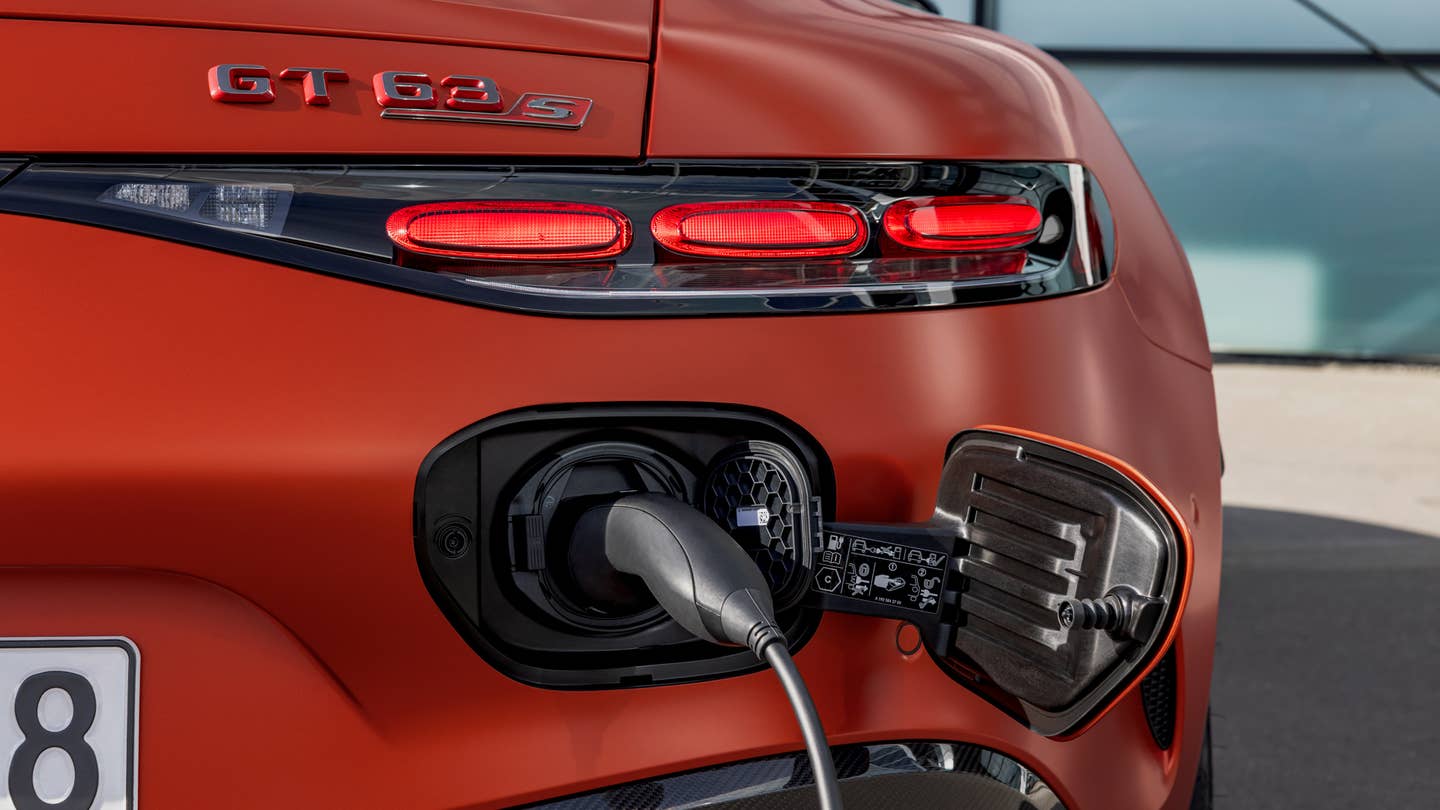Imagine the repair bill after being rear-ended.

Over the weekend, Mercedes revealed its latest hybrid performance car, the confoundingly named Mercedes-AMG GT63 S E Performance. It’s a monstrously powerful, 805-horsepower coupe with great looks and impressive stats. However, it has an odd feature that might end up causing headaches for owners: its charge port is built into the rear bumper.
There is no standard charge port placement for hybrids and electric vehicles, so many automakers are still experimenting with different, sometimes unusual placements. We’ve seen charge ports in fenders, taillights, and even grilles. However, Mercedes put the hybrid AMG GT63’s charge port on the right side of the rear bumper, which seems like it’s in the prime spot to be destroyed in even a minor rear-end crash.
Mercedes
Charge port doors aren’t any sturdier than a typical fuel filler door, so they’re fairly easy to damage. However, that’s not the problem. The problem is the high-voltage socket, and the wiring attached to it, right behind it. Even a low-speed crash from behind could seriously damage that socket, which would inevitably lead to a pricey repair. Admittedly, bumper replacements already aren’t cheap on modern cars—especially luxury cars—due to the array of sensors built into them. However, the damage to a high-voltage charging socket could dramatically increase the replacement cost even further.
What’s the difference with most other charging port placements, you might ask? Typically, charge ports are placed where fuel doors might be—on the rear or front fenders. Crashes in those areas are less common than rear-end collisions, so they’re less vulnerable there.
Mercedes
In Mercedes’ defense, it isn’t the only brand to have rear charge ports. The Tesla Model 3’s port is built into its taillight, another common crash point. The upcoming electric Porsche Boxster’s charge port is located directly in the center of its rear bumper, just above the license plate. The fact Merc isn’t alone, though, doesn’t necessarily make the idea any better on merit.
Will many Mercedes owners actually care? Considering the car will cost north of the current AMG GT63’s $177,000 starting price when it goes on sale later this year, anyone who can afford the car can likely afford the repair. And the fault of a rear-end crash usually belongs to the car doing the rear-ending, so that driver’s insurance would likely have to pay for the repair anyway. However, that increased cost could end up financially totaling a car that otherwise might not need to be totaled.
When you look at it that way, placing the door on a quarter panel begins to sound like the more common-sense move. But what do you think? Is the convenience of a shorter reach when backing into a stall worth the added risk?
Got tips? Send ’em to tips@thedrive.com


